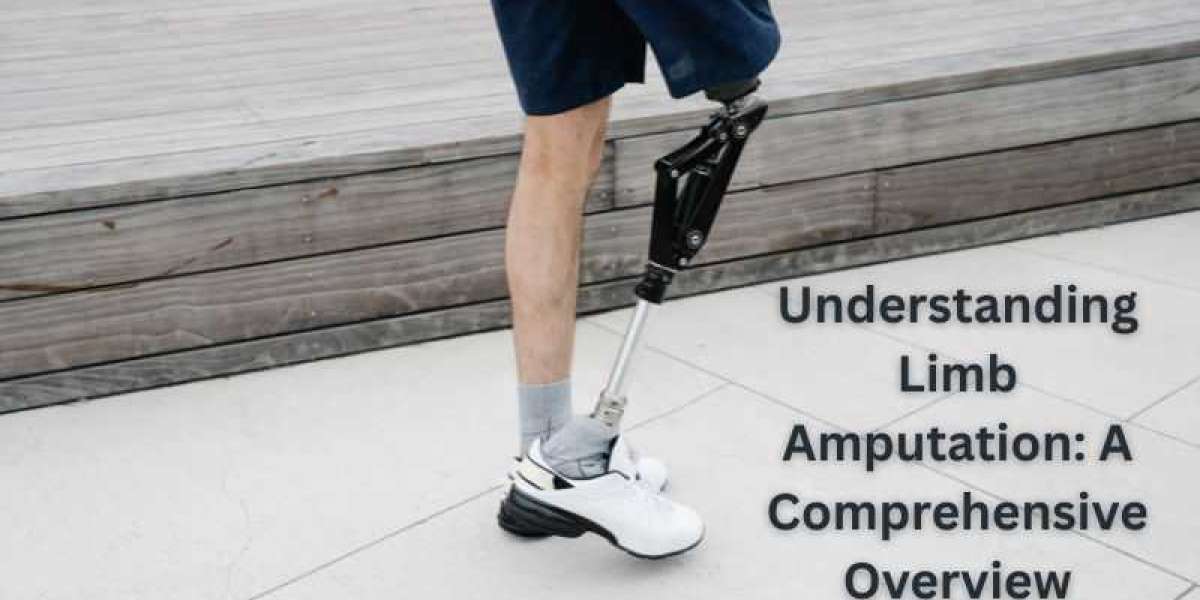Limb amputation is a surgical procedure that involves the removal of a limb or part of a limb due to injury, disease, or congenital conditions. While the loss of a limb can be a traumatic experience, understanding the types, causes, and rehabilitation options can offer hope and a path toward recovery for those affected. In this blog, we will explore lower limb amputation types, the process of limb amputation, and how individuals can adapt to life after the surgery.
What is Limb Amputation?
Limb amputation is the removal of a part of the body, usually a limb, due to medical necessity. The decision to amputate is typically made when other treatments, such as medication, physical therapy, or reconstructive surgery, are not viable options. Amputation may be required due to various reasons, including trauma, severe infections, or chronic conditions like diabetes or peripheral artery disease (PAD). In some cases, amputation may also be done to treat cancerous tumors or congenital abnormalities.
Lower Limb Amputation Types
Amputations are classified based on the portion of the limb that is removed. For the lower limbs, amputation can occur at different levels, each with its own implications for mobility and rehabilitation. Understanding the lower limb amputation types is crucial for determining the appropriate prosthetic solutions and rehabilitation strategies.
1. Below-the-knee amputation (BKA)
One of the most common lower limb amputation types is the below-the-knee amputation (BKA), where the leg is amputated below the knee joint. This type of amputation is preferred when the knee joint remains functional, as it allows for better mobility and easier prosthetic adaptation. A prosthetic leg fitted with a knee and ankle joint can be used to restore a high level of function, allowing the individual to walk with minimal difficulty.
2. Above-the-knee amputation (AKA)
In an above-the-knee amputation (AKA), the leg is removed above the knee joint, typically through the femur. This type of amputation is necessary when there is extensive damage to the lower leg that cannot be saved, or if the knee joint itself is severely compromised. Above-the-knee amputees often require a more sophisticated prosthetic with a knee mechanism, as the lack of a knee joint makes mobility more challenging. Physical therapy and training play a critical role in helping patients adapt to their new prosthetics.
3. Hip Disarticulation
Hip disarticulation is one of the more extreme lower limb amputation types, where the entire leg, including the hip joint, is amputated. This is typically performed in cases of severe trauma or cancer affecting the hip joint. Mobility after a hip disarticulation is challenging, as the individual will require a specially designed prosthetic limb. However, with proper rehabilitation, individuals can regain the ability to perform various activities.
4. Transpelvic Amputation
Transpelvic amputation is a rare and highly complex procedure where the entire leg is amputated, and the pelvis is also involved in the amputation. This procedure is usually reserved for cases where severe trauma or disease has affected both the leg and the pelvis, leaving no viable options for limb salvage. It is one of the most extensive types of amputation, and individuals who undergo this surgery face significant challenges in terms of mobility and rehabilitation. However, advancements in prosthetics have allowed some individuals to regain a degree of independence.
Reasons for Limb Amputation
There are various reasons why limb amputation may be necessary. Some of the most common causes include:
1. Trauma
Injuries from accidents, such as car crashes, industrial accidents, or severe burns, can cause irreparable damage to the limbs, necessitating amputation. When a limb is severely crushed, infected, or beyond repair, amputation may be the only option to prevent further complications such as sepsis.
2. Peripheral Artery Disease (PAD)
PAD is a condition that causes the narrowing of the blood vessels, leading to poor circulation, particularly in the legs. When blood flow is severely restricted, the tissues may begin to die, and if the damage is too extensive, amputation may be necessary to save the patient’s life. PAD is a common cause of lower limb amputation types, especially in older adults.
3. Diabetes
Diabetes is another leading cause of amputation, particularly in the lower limbs. High blood sugar levels can lead to nerve damage and poor circulation, making the legs more susceptible to infection. In some cases, ulcers and infections can progress to the point where amputation is the only way to stop the spread of disease.
4. Cancer
Certain types of cancer, especially those that affect bones, muscles, or soft tissues, may require limb amputation if the tumor cannot be removed by other means. In some cases, amputation may be necessary to prevent the spread of cancer.
5. Congenital Conditions
Some individuals are born with limbs that are malformed or missing altogether. In cases of severe malformation, limb amputation may be performed to improve the function of the remaining limb or to fit a prosthetic limb.
The Amputation Process
The decision to undergo limb amputation is not taken lightly. It typically involves a thorough evaluation by a team of healthcare professionals, including surgeons, physiatrists, and prosthetists. Once the need for amputation is confirmed, the surgery is planned, and the patient is prepared both physically and emotionally for the procedure.
During the amputation surgery, the surgeon removes the affected limb, leaving behind a healthy portion of tissue. The remaining stump is carefully shaped to allow for the best fit for a prosthetic limb. After the procedure, the patient will undergo rehabilitation to learn how to use a prosthetic limb and adapt to life without the amputated part.
Rehabilitation and Adaptation
Rehabilitation is a crucial part of the recovery process for anyone undergoing limb amputation. Physiotherapists and occupational therapists work with patients to help them regain strength, mobility, and independence. Prosthetics play a significant role in this process, as they allow the individual to regain the ability to walk, run, or perform other activities. The type of prosthetic recommended will depend on the type of amputation and the individual’s needs.
Psychological support is also essential, as the emotional and psychological impact of losing a limb can be profound. Support groups and counseling can help individuals cope with the challenges of amputation and improve their quality of life.
Conclusion
Limb amputation is a life-altering procedure, but with advancements in medical technology, prosthetics, and rehabilitation, many individuals can regain mobility and independence. Understanding the different lower limb amputation types and the factors that influence the need for amputation can help patients make informed decisions and better prepare for the challenges ahead. Whether due to trauma, disease, or congenital conditions, the journey after limb amputation can be difficult, but it is also one of resilience and hope.
for more(click here)

